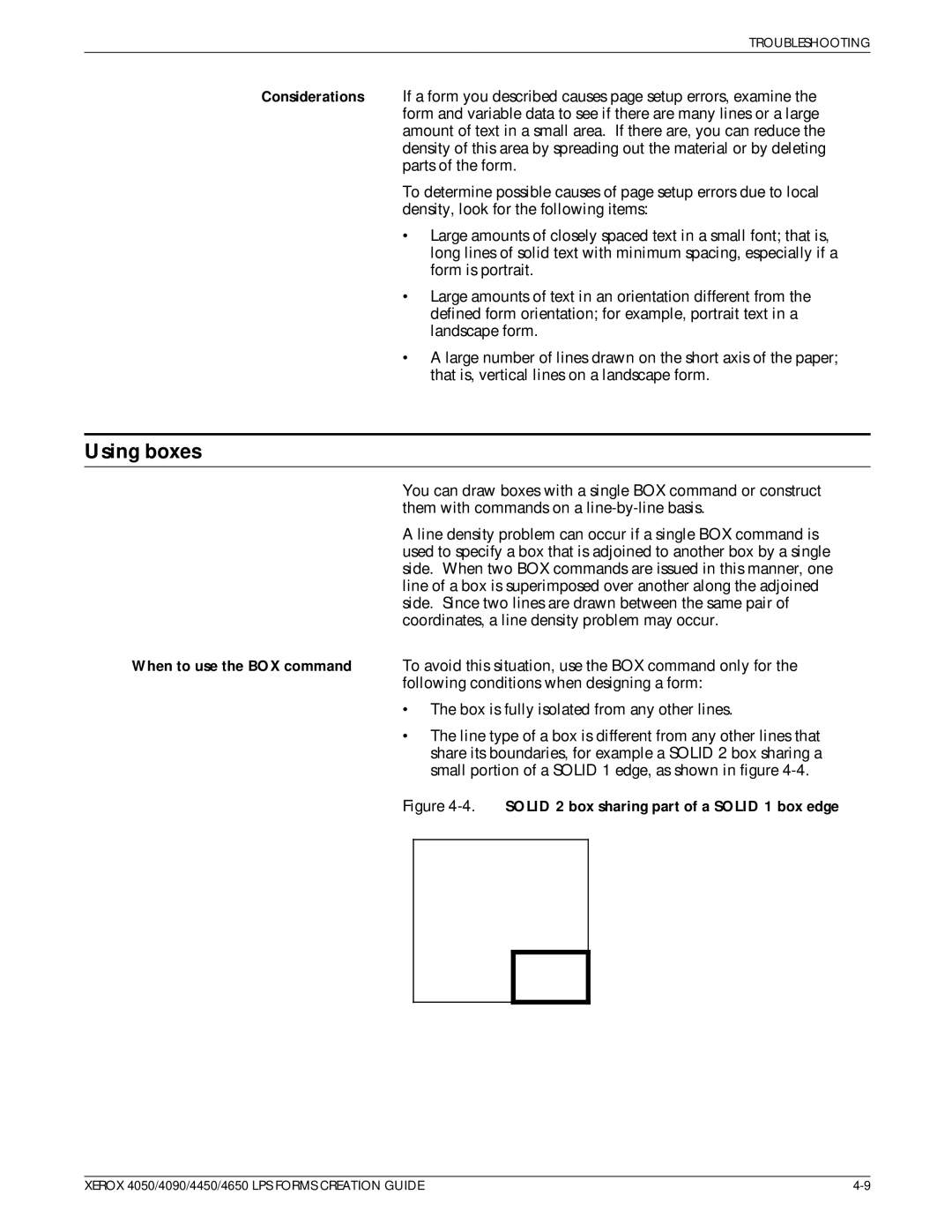
TROUBLESHOOTING
Considerations If a form you described causes page setup errors, examine the form and variable data to see if there are many lines or a large amount of text in a small area. If there are, you can reduce the density of this area by spreading out the material or by deleting parts of the form.
To determine possible causes of page setup errors due to local density, look for the following items:
·Large amounts of closely spaced text in a small font; that is, long lines of solid text with minimum spacing, especially if a form is portrait.
·Large amounts of text in an orientation different from the defined form orientation; for example, portrait text in a landscape form.
·A large number of lines drawn on the short axis of the paper; that is, vertical lines on a landscape form.
Using boxes
You can draw boxes with a single BOX command or construct them with commands on a
A line density problem can occur if a single BOX command is used to specify a box that is adjoined to another box by a single side. When two BOX commands are issued in this manner, one line of a box is superimposed over another along the adjoined side. Since two lines are drawn between the same pair of coordinates, a line density problem may occur.
When to use the BOX command To avoid this situation, use the BOX command only for the following conditions when designing a form:
·The box is fully isolated from any other lines.
·The line type of a box is different from any other lines that share its boundaries, for example a SOLID 2 box sharing a small portion of a SOLID 1 edge, as shown in figure
Figure 4-4. SOLID 2 box sharing part of a SOLID 1 box edge
XEROX 4050/4090/4450/4650 LPS FORMS CREATION GUIDE |
